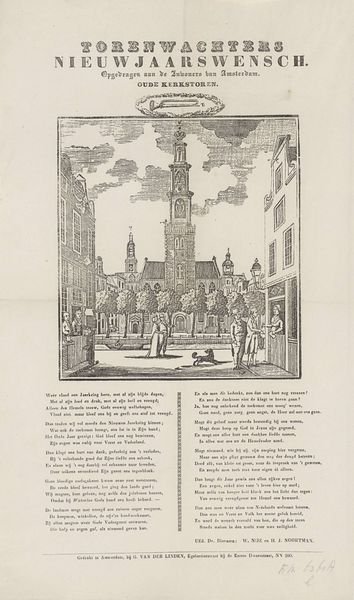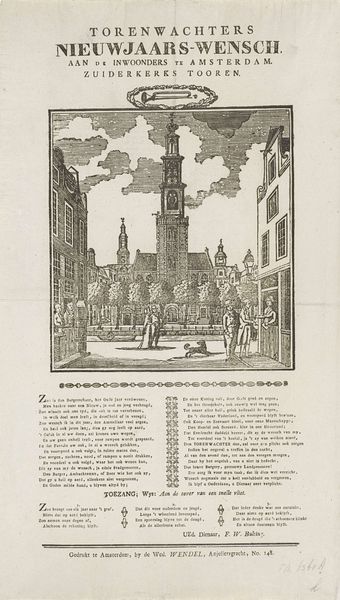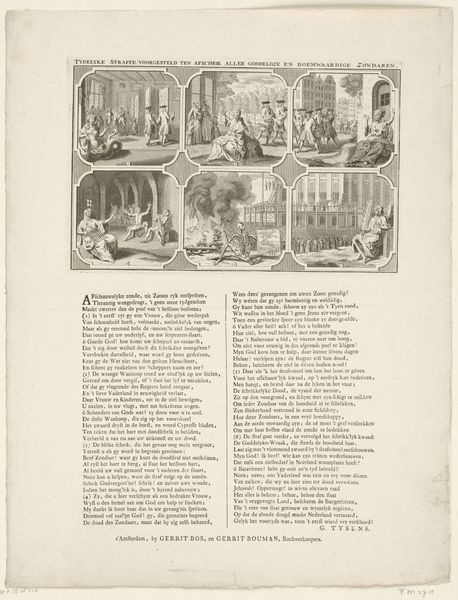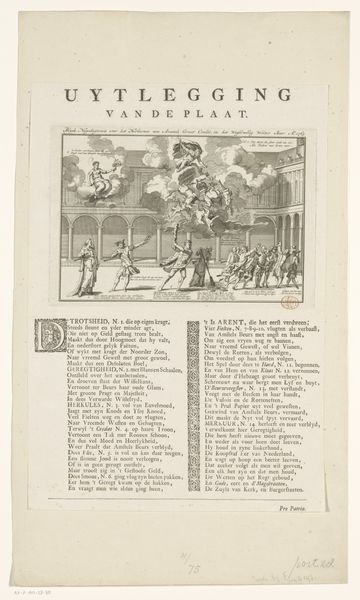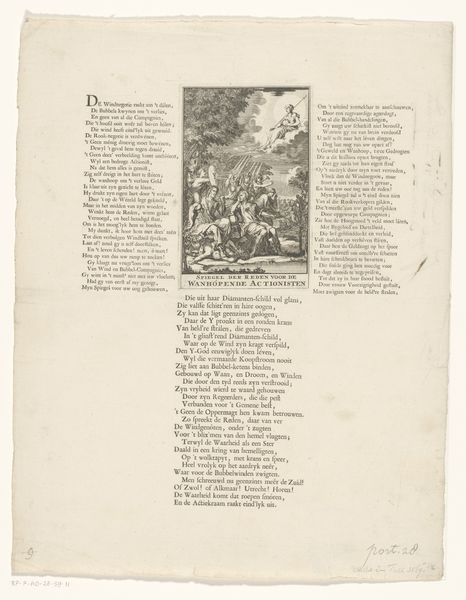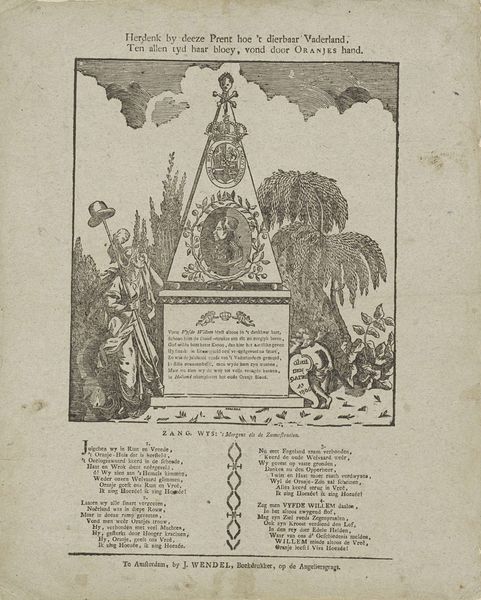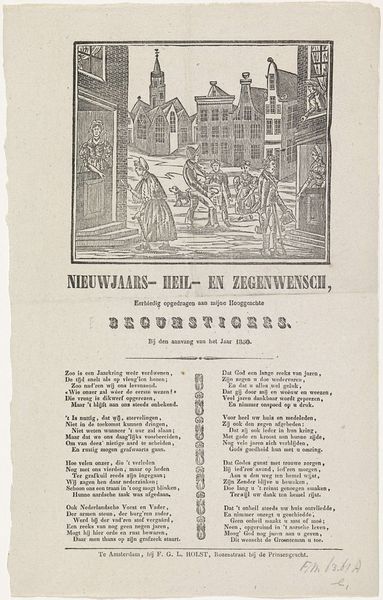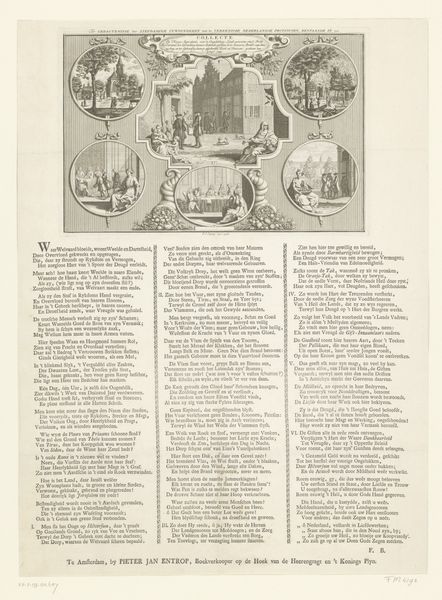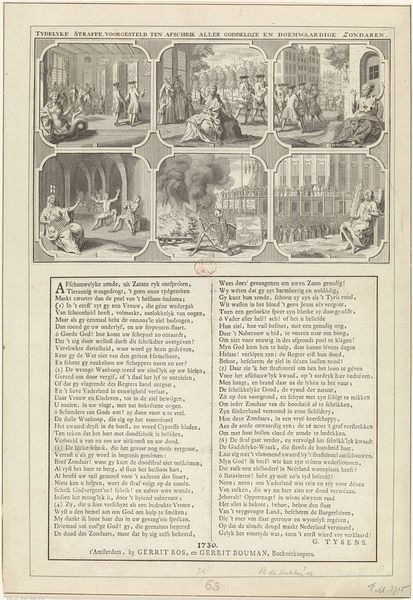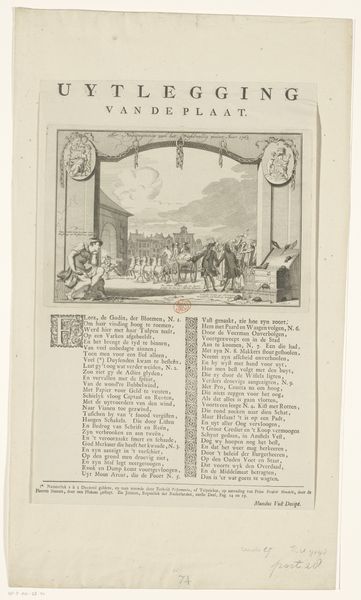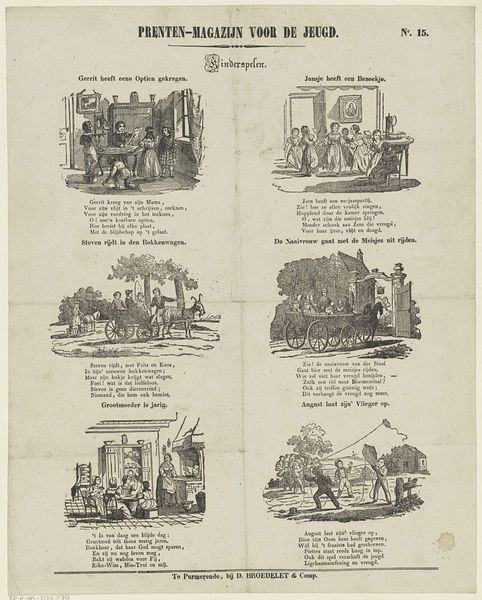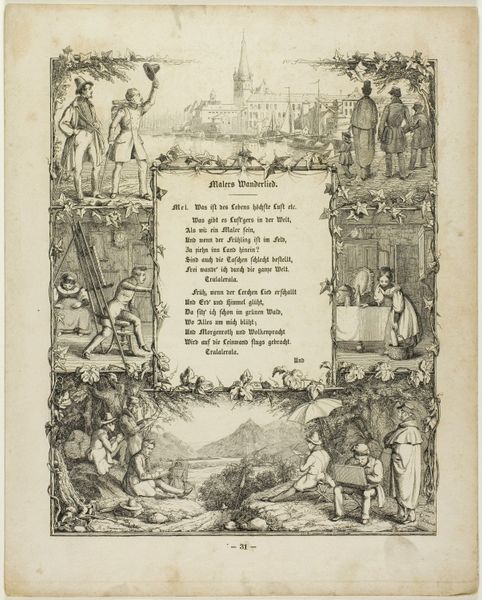
Nieuwjaarswens van de torenwachters van de Westerkerk te Amsterdam, ca. 1840-1870 1840 - 1870
0:00
0:00
anonymous
Rijksmuseum
print, textile
#
dutch-golden-age
# print
#
textile
#
cityscape
Dimensions: height 469 mm, width 280 mm
Copyright: Rijks Museum: Open Domain
Editor: This print, dating from around 1840-1870, is titled "Nieuwjaarswens van de torenwachters van de Westerkerk te Amsterdam," or, “New Year's wish from the tower watchmen of the Westerkerk in Amsterdam." It’s… surprisingly festive, even considering it’s a New Year's greeting. What strikes me most is how it captures a specific sense of civic life. What do you see in this piece, beyond just a charming cityscape? Curator: It’s more than just charming, it's a piece of social commentary embedded within a cultural practice. These “nieuwjaarswensen,” printed on textiles often, were essentially early forms of public service announcements intertwined with charity. The tower watchmen, symbols of civic vigilance, were literally appealing to the citizens. Notice how the architecture itself—the Westerkerk— looms large, representing not just a building, but the institutions it embodies. The poem surrounding it, how does that function in your view? Editor: I suppose it's the actual "wish," the explicit expression of hope and good fortune. But I'm also curious about the street scene itself – those figures seem placed almost deliberately, right? Curator: Exactly. Consider the class dynamics at play. You have the watchmen interacting, perhaps even soliciting funds, from citizens of varying social standing. It’s a performance of sorts, highlighting the hierarchical, often unspoken, relationships within the city itself. And it's being circulated publicly, reminding everyone of these roles and responsibilities. Do you think this kind of public display solidified social order? Or perhaps challenged it? Editor: Hmm… maybe a bit of both? Reinforcing the order through its display of the current hierarchy but it seems like providing such display would invite, implicitly, the consideration of how those hierarchies can be upended, since what has been built up can always be taken down. It has been really great looking at this piece. I'll look into these textiles and the implications on social interactions and class going forward. Thanks for the insight! Curator: My pleasure. Remember that even seemingly simple images like these are products and reflections of their social world. Keeps digging below the surface!
Comments
No comments
Be the first to comment and join the conversation on the ultimate creative platform.
